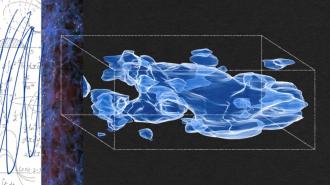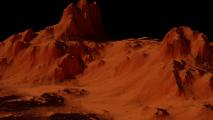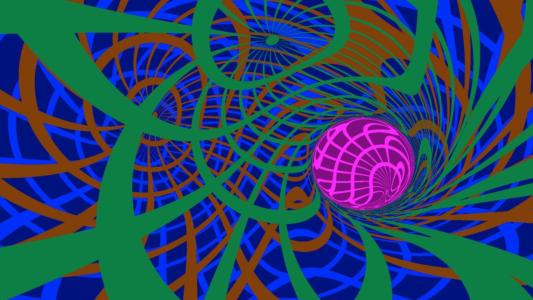A consensus has arisen in the astronomical community that familiar matter made of atoms is not the dominant form of matter in the Universe. Instead, an invisible form of matter, called dark matter, is thought to be far more prevalent. However, a small group of researchers deny the existence of dark matter, instead saying our understanding of how objects move is incomplete. A recent paper in the Monthly Notices of the Royal Astronomical Society seems to have ruled this out definitively.
Dark matter vs. MOND
Stars, planets, and galaxies move under the direction of the force of gravity, and Isaac Newton worked out the laws that govern that motion, which we now call Newtonian dynamics. However, despite the enormous success of Newtonian dynamics, this success is not universal. Indeed, when Newton’s equations are applied to certain astronomical phenomena, they do not make the correct predictions. One such example is the speed at which galaxies rotate. When astronomers measure the speed of stars in the periphery of a galaxy, they move faster than can be explained by accepted theory. Instead, the galaxies should fly apart.
The solution to this mystery favored by most scientists is that beyond the familiar stars and clouds of gas, our galaxy also hosts a large amount of invisible matter, called dark matter. This dark matter adds to the gravitational force holding the galaxy together. Thus, the evidence for dark matter is indirect. It has never been observed in the laboratory; yet its ability to explain the motion of galaxies is strong circumstantial evidence that it exists.
Still, because dark matter remains unobserved, alternative hypotheses should be considered. One idea, called MOND (Modified Newtonian Dynamics), suggests that the Newtonian laws of motion taught in introductory physics classes are not quite right. For accelerations larger than about 10-11 times the gravity felt on the surface of Earth, Newton’s familiar equations work. For accelerations smaller than that, a new set of equations applies. MOND theory was first devised by Israeli physicist Mordehai Milgrom in 1983, and while the model is not accepted by the majority of astronomers, it has some passionate supporters.
When astronomers apply MOND theory to predicting the rotation of galaxies, it works quite well, essentially as well as dark matter theory does. Thus, a measurement is needed that will definitively distinguish between the two.
Testing MOND
In the newly released paper, researchers used data recorded using the Gaia satellite to study wide binary stars, which are two stars that orbit one another at large distances. In this study, binary stars were included if their separation was in the range of 2,000 to 30,000 times the average separation between Earth and the Sun. Binary stars with these characteristics experience a range of accelerations that allow scientists to try to determine if MOND or Newtonian theory is correct.
So, what did they find? The study very clearly favors Newtonian theory over MOND as an accurate description of the orbital behavior of wide binary stars. (The measurement ruled out MOND by sixteen sigma, which is far larger than a five-sigma result that is considered definitive.)
In their paper, researchers also tackled earlier reports that wide binaries actually supported the MOND hypothesis. They separated their data into wide binaries in which the measurements were precise and ones in which there was significant uncertainty in the numbers. They found that an analysis that included poorly measured wide binaries favored MOND, but when only precisely measured results were included, the data strongly favored Newtonian dynamics.
Does this measurement prove that dark matter is real? No. That would be too strong of a conclusion. If confirmed, what it demonstrates is that the specific theory called MOND is incorrect. It does not rule out all alternative theories to dark matter. Others remain viable. Indeed, there are other proposed solutions to the mystery of rapidly rotating galaxies, including changes to the laws of gravity, as well as different modifications to the laws of motion. In addition, while the distance separating wide binary stars is very large, it is very small compared to the size of galaxies. It remains possible that MOND theory could apply on galactic sizes, but not on the scale of large stellar systems.
Sherlock’s approach to astrophysics
Still, the result, if confirmed, is a very important advance in our search for the answer of why galaxies rotate so quickly. While not as satisfying as a definitive discovery, definitive refutations of other theories is how science advances. As fictional detective Sherlock Holmes once said in the story “The Sign of Four”: “Once you eliminate the impossible, whatever remains, no matter how improbable, must be the truth.”
This article was reprinted with permission of Big Think, where it was originally published.





